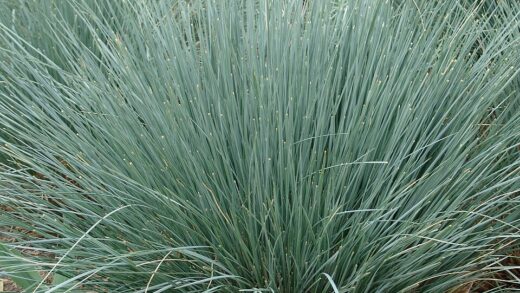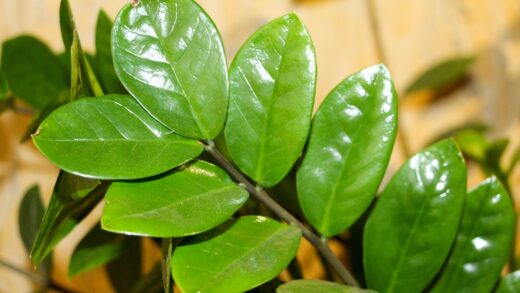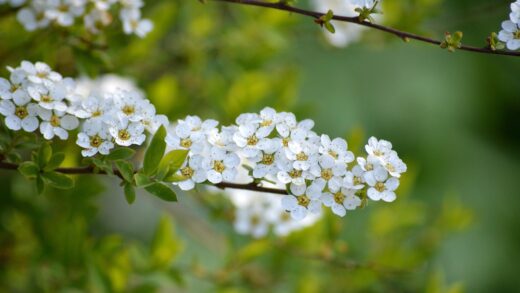Providing the appropriate nutrition for the wood anemone is a subtle art that leans heavily on emulating its natural woodland environment rather than relying on intensive feeding schedules. This charming spring ephemeral is adapted to a life on the forest floor, where it derives its sustenance from the slow and steady decomposition of organic matter. It is not a heavy feeder and is, in fact, sensitive to overly rich conditions or the application of harsh chemical fertilizers. The key to nourishing the wood anemone lies in cultivating a healthy, living soil, rich in humus, which provides a continuous, gentle supply of the essential nutrients it needs to thrive. Understanding this fundamental principle is the foundation for a successful and sustainable approach to its fertilization.
The primary source of nutrients for a wood anemone in its natural habitat is the annual shedding of leaves from the deciduous trees above. This leaf litter is gradually broken down by a complex web of soil microorganisms, fungi, and invertebrates, creating a nutrient-rich layer of humus. This process releases essential minerals in a slow, controlled manner, perfectly synchronized with the plant’s needs. Therefore, the most effective way to fertilize wood anemones in a garden setting is to replicate this natural cycle. This is best achieved through the regular application of organic mulches, such as well-rotted leaf mould, garden compost, or composted bark.
When preparing a new bed for wood anemones, the initial incorporation of a generous amount of organic matter is the single most important step you can take to ensure their long-term nutritional health. Working several inches of compost or leaf mould into the top layer of the soil creates a reservoir of nutrients and improves the soil structure, fostering the kind of healthy soil ecosystem in which these plants flourish. This initial investment in soil health will pay dividends for years to come, reducing or even eliminating the need for any supplemental feeding.
The use of synthetic, high-nitrogen fertilizers should be strictly avoided. These can force rapid, soft, and lush foliar growth at the expense of flower production and rhizome development. This weak growth is also more susceptible to pests and diseases, and the high concentration of mineral salts in chemical fertilizers can damage the delicate root systems of woodland plants. The philosophy should be one of feeding the soil, not the plant. A healthy, organically rich soil will, in turn, provide the plant with everything it needs in the correct proportions and at the right time.
Emulating the natural woodland cycle
The most successful approach to nourishing the wood anemone is to look to its natural habitat for inspiration. In a deciduous woodland, the plant’s entire nutritional needs are met through the natural process of decomposition. Each autumn, a fresh blanket of leaves falls to the ground, and over the winter and spring, this layer is slowly broken down by soil life. This creates a dark, crumbly, and incredibly fertile layer of humus. This humus is not just a source of nutrients; it is a complete ecosystem that supports the plant in myriad ways, from retaining moisture to suppressing disease.
More articles on this topic
In the garden, we can emulate this cycle by applying an annual mulch of organic material. The best time to do this is in the late autumn, after the leaves have fallen from the trees and the ground is beginning to cool. A layer of well-rotted leaf mould is the gold standard, as it most closely replicates the natural conditions. If leaf mould is not available, good quality garden compost or finely shredded bark are excellent alternatives. This mulch should be applied in a layer approximately five to seven centimeters deep over the area where the anemones are dormant.
This autumn mulching serves multiple purposes. It provides a protective, insulating layer for the shallow rhizomes over the winter. As the mulch slowly decomposes, it releases a steady, gentle stream of essential nutrients into the soil, which will become available to the plants when they begin their active growth in the spring. This slow-release method prevents the shock that can be caused by a sudden influx of nutrients from a chemical fertilizer and ensures the plant receives a balanced diet. It is a process of long-term soil building, creating a sustainable and fertile environment.
By adopting this practice, you are not just feeding your wood anemones; you are fostering a healthy soil food web. The organic mulch provides food for earthworms, beneficial bacteria, and mycorrhizal fungi, all of which play a role in making nutrients available to the plant’s roots. This holistic approach creates a resilient and self-sustaining garden environment, reducing the need for interventions and resulting in healthier, more vigorous plants that will gracefully perennialize and spread over time.
The importance of organic matter
Organic matter is the cornerstone of a successful feeding strategy for wood anemones. Its role extends far beyond simply providing nutrients. When incorporated into the soil, organic matter, such as compost or leaf mould, dramatically improves the physical structure of the soil. In heavy clay soils, it helps to separate the fine clay particles, creating better drainage and aeration, which is vital for preventing the rhizomes from rotting. In sandy soils, it acts as a binding agent, helping the soil to retain both moisture and nutrients that would otherwise leach away too quickly.
More articles on this topic
This improved soil structure creates an ideal environment for the plant’s root system to develop. The fine, fibrous roots of the wood anemone can penetrate and explore a loose, friable soil much more easily than a compacted one. A well-structured soil also supports a thriving population of beneficial soil organisms. Earthworms, for example, tunnel through the soil, further improving its aeration and drainage, while their castings provide a rich source of plant-available nutrients. A garden rich in organic matter is a living, breathing ecosystem.
The initial soil preparation is the most critical time to add organic matter. Before planting, you should aim to incorporate a significant amount into the top fifteen to twenty centimeters of the soil bed. This creates a foundational reservoir of fertility that will support the plants for many years. It is an investment that pays long-term dividends, as it is much more difficult to fundamentally change the soil structure once the plants are established, due to their dislike of being disturbed.
Beyond the initial preparation, the annual application of an organic mulch continues to replenish the organic matter content of the soil. As the mulch breaks down at the surface, its components are gradually worked into the soil profile by the action of weather and soil life. This top-down enrichment process perfectly mirrors what happens in a natural woodland. Consistently focusing on building and maintaining a high level of organic matter in your soil is the most important thing you can do to meet the nutritional needs of your wood anemones.
When supplemental feeding may be needed
While a regimen based on rich organic soil and annual mulching is sufficient for wood anemones in most situations, there are some specific circumstances where a light supplemental feeding might be beneficial. If your plants are growing in soil that is inherently poor and sandy, or if they are established in a bed that was not adequately prepared with organic matter initially, you may notice signs of nutrient deficiency. These can include pale or yellowish leaves (chlorosis), stunted growth, or a significant decline in flower production over the years.
In such cases, a very gentle supplemental feeding can help to rejuvenate the plants. The best time to apply any fertilizer is in the very early spring, just as the first shoots are beginning to emerge from the ground. This timing ensures that the nutrients are available to the plant right at the start of its active growth period when the demand is highest. Applying fertilizer later in the season is less effective and can be wasteful, as the plant will soon be entering its dormancy.
The choice of fertilizer is critical. You must use a balanced, slow-release organic fertilizer. Products such as bone meal, blood, fish, and bone, or a well-balanced, pelleted organic fertilizer are suitable options. These release their nutrients slowly over time as they are broken down by soil microbes, mimicking the natural process of decomposition. It is crucial to follow the application rates recommended on the packaging and to err on the side of using less rather than more. A light sprinkling around the base of the emerging plants is all that is required.
After applying a granular organic fertilizer, it is a good practice to gently scratch it into the surface of the soil and water it in well. This helps to start the process of decomposition and makes the nutrients accessible to the plant’s roots. It is important to reiterate that this supplemental feeding should be seen as a corrective measure for poor soil conditions, not as a routine part of wood anemone care. The primary goal should always be to improve the soil’s organic content, which provides a much more sustainable and long-term nutritional solution.
Fertilizers to avoid
Just as important as knowing what to feed your wood anemones is knowing what to avoid. These delicate woodland plants are highly sensitive to the wrong kind of nutrition, and improper fertilization can cause more harm than good. The most important category of products to steer clear of are synthetic chemical fertilizers, especially those that are high in nitrogen. These fast-acting fertilizers deliver a concentrated jolt of nutrients that is completely alien to what the plant is adapted to in its natural environment.
High-nitrogen fertilizers, often marketed for promoting lush green lawns or leafy vegetables, will have a detrimental effect on wood anemones. They encourage the plant to produce an abundance of soft, weak foliage at the expense of developing a strong rhizome and producing flowers. This unnatural, forced growth is much more vulnerable to attack from pests like aphids and diseases like powdery mildew. Furthermore, the high concentration of mineral salts in these chemical fertilizers can scorch the fine, sensitive roots of the plant, causing significant damage to its ability to absorb water and nutrients.
You should also be wary of using fresh, uncomposted manures. While well-rotted manure can be a valuable soil amendment, fresh manure is far too strong and “hot” for wood anemones. The high levels of ammonia and other readily available nutrients can severely burn the plant’s roots and rhizomes. Manure should always be allowed to compost for at least six to twelve months until it is dark, crumbly, and has an earthy smell before it is used anywhere near these delicate plants.
In essence, the best approach is to avoid any fertilizer that promises “fast-acting” or “instant” results. The nutritional needs of the wood anemone are met by slow, steady, and natural processes. Anything that deviates from this can upset the delicate balance that the plant requires. By sticking to organic mulches like leaf mould and compost, and only using a gentle, slow-release organic fertilizer if absolutely necessary, you will be providing your wood anemones with a nutritional plan that respects their wild origins and supports their long-term health and beauty.


















